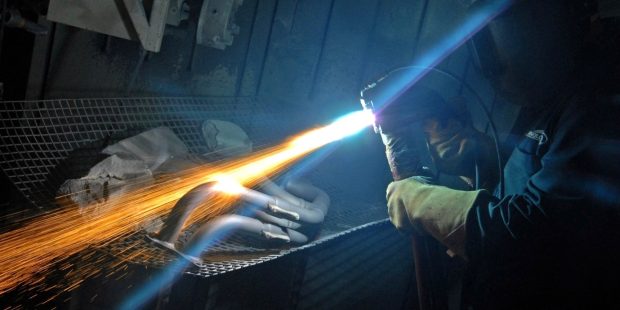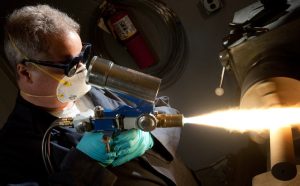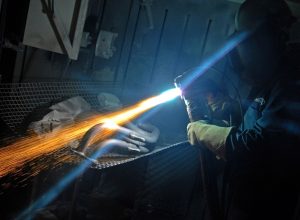
Thermal spraying has two principal benefits, the first is to protect components from damage, and the second is to impart other qualities to the substrate such as conductivity, chemical resistance, insulation, low friction or other surface properties.
The process produces a coating on the substrate surface, by spraying heated or melted material onto the substrate. Typically the coating material will be in either powder or wire form. The sprayed layers produced are anisotropic and the splats created on the substrate interlock to create a solid surface.
Enhancing life
The beauty of thermal spraying is that it can not only be used to enhance the life of components, but also in any re-engineering carried out to improve their lifespan. The accuracy of the spray means that the finish provided produces a dense coating which has high compressive stress value.
Traditional processes involve either an arc created by two wires or power fed into a plasma gas stream whilst a more sophisticated finish is achieved with inert gases. The thermal plasma spray process involves a massive transfer of heat as the gases leave the gun and return to their original state, propelling the coating material onto the substrate. This process is often used to apply ceramic coatings since they have a high melting point.
These processes are provided by specialist companies and you will find them online at sites such as https://www.poeton.co.uk/advanced-treatments/apticote-800-thermal-plasma-spray/.
Image Credit
Aerospace industry
Thermal spraying is a process which has developed continuously over the last 100 years, and continues to do so. Latest developments involve radio frequency induced plasma using very high temperatures and the contrary low temperature high velocity process with an accurate spray on localised areas of a substrate which deposit a dense coating which demonstrates high compressive stress.
There are many industries which use the thermal spraying process, including the gas and oil sector and aerospace. In the latter, carbides and oxides are often used. In recent years these coatings have been replacing chromium plating to produce enhanced high performance. It helps turbine blades retain resilience at high temperatures, and aids the performance of many other components such as landing gear. Naturally it is also used on smaller parts such as bearings, casings and axles.
The motor industry also uses thermal spraying extensively, on many parts. These include exhaust systems, gear selector forks, braking systems, cylinder bores as well as piston crowns and rings.


